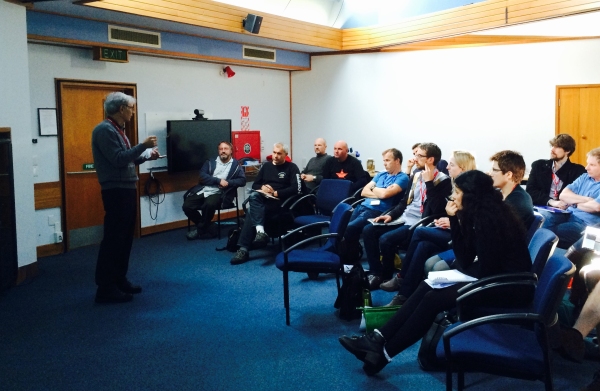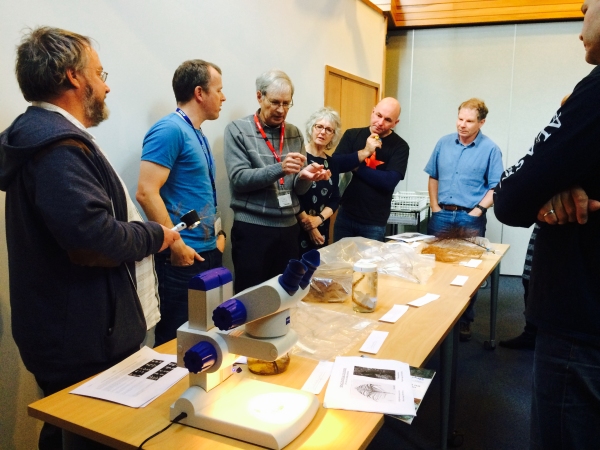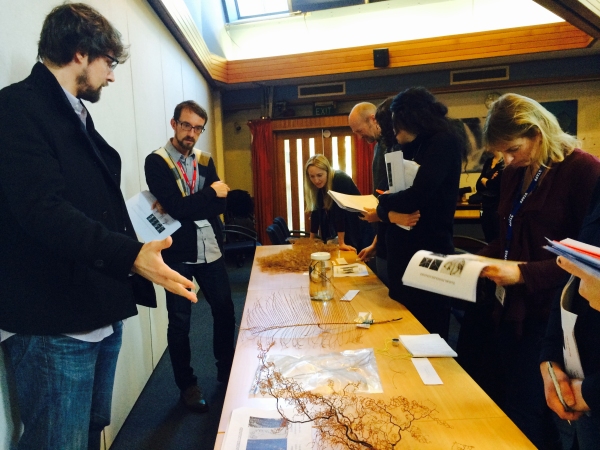NIWA was the host of the third in a series of deepsea coral identification workshops organised for the U.S. - New Zealand (NZ) Joint Committee Meeting (JCM) on Science and Technology Cooperation, Theme 2.4: Marine and Ocean Research last week, 2-5 June 2015.
One of the world experts on Antipatharia taxonomy, Dr Dennis Opresko from the Smithsonian Institution, assisted by Dr Mercer Brugler from the American Museum of Natural History in New York, trained an eager group of New Zealand and international participants on how to identify black corals.
A group of 26 participants from various institutions including NIWA, the Department of Conservation, Victoria University of Wellington and the Auckland Museum were taught how to identify specimens of black coral to a high level, whether on deepsea video or from collected specimens, using characters from the spiny black skeleton of the coral, and by the arrangement of their polyps.
Antipatharia have flattened polyps with six unbranched tentacles, which surround a mouth. The branching pattern of the main stem and the arrangement of pinnules coming off the main stem of the coral are key characters that help place the black corals into their different genera.
A smaller group of six participants joined Dr Opresko and Dr Brugler at the NIWA Invertebrate Collection for the whole week examining specimens and learning how to identify them further. The group includes NIWA principal technician Rob Stewart, Dr Lyndsey Holland and Dr Aimée Komugabe from Victoria University of Wellington, Dr Jaret Bilewitch, Hyacinth Suarez from the University of San Carlos, Philippines and Jeremy Horowitz from James Cook University, Townsville, Australia. They made good use of NIWA’s Hitachi benchtop SEM to prepare specimens for SEM imagery, and the NIWA Marine Invasive Taxonomic Service online microscope camera system to make measurements of the microscopic spines on the black coral skeletons.
During the week the group identified specimens collected from biodiversity research surveys, fishery trawl surveys and samples from Ministry for Primary Industries Scientific Observers. The group have made several discoveries, and one that we have decided to highlight as our critter of the week this week.
Telopathes Specimens
A recently described genus of black corals, Telopathes found in deep water off Atlantic Canada is now recorded from deep water off New Zealand. At the moment this genus only contains one species, Telopathes magnus MacIsaac & Best, 2013.
Twelve specimens in our collection previously thought to be from the genus Bathypathes, which is a monopodially branched genus with simple unbranched pinnules, have now been re-identified as Telopathes. All of the specimens resemble Bathypathes at first glance but have a secondary branch coming off the main stem, placing them morphologically in the new genus Telopathes. Preliminary investigations by the researchers at the workshop show that there might be more than one species in our waters, and that we might have a new species on our hands!
Dr Mercer Brugler, who was a co-author on the MacIsaac et al., 2013 paper, will take subsamples from our specimens back to his home institution to test them genetically and find out how related they are to the species described from the Atlantic.
The workshop and attendance of participants was funded by the Smithsonian Institution, NIWA and the NZ Ministry for Business Innovation and Employment.



